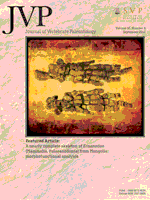
A New Late Triassic Vertebrate Fauna from Poland with Turtles, Aetosaurs, and Coelophysoid Dinosaurs
No abstract available
No abstract available
No abstract available
No abstract available
No abstract available
No abstract available
